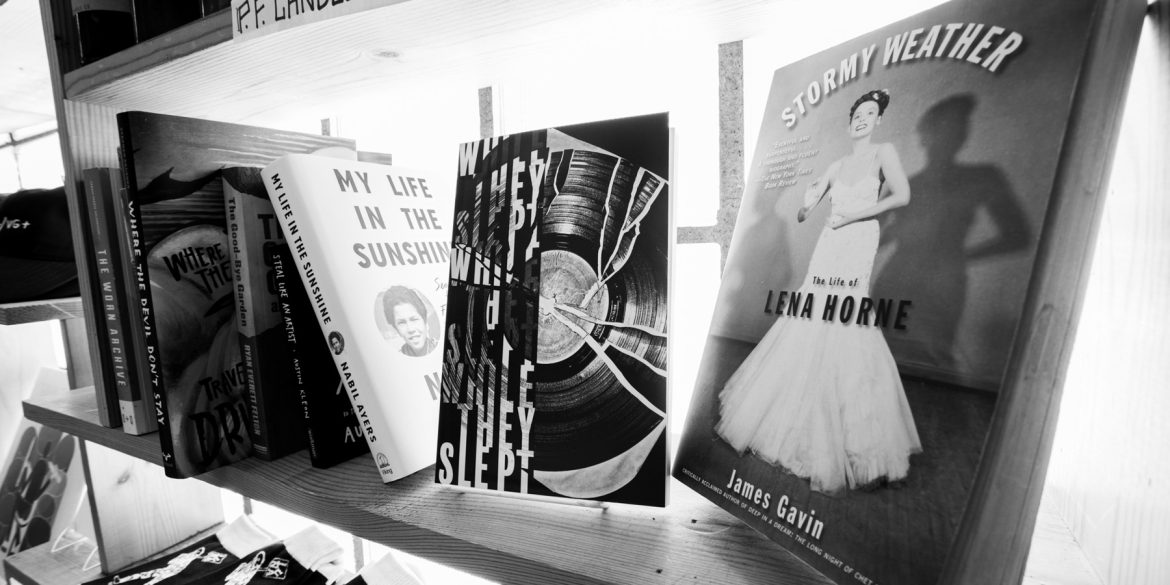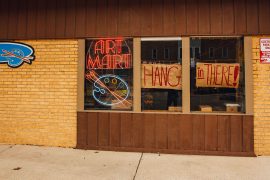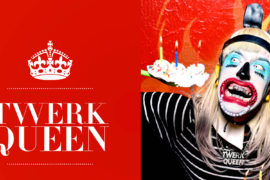Local photographer Jacob Moran recently released his photo book, While They Slept. The book is a black-and-white film tribute to Indianapolis rappers. The local music scene is rich with talent, yet consistently slept on—not only by outsiders but locals too. Moran wanted to shift this narrative and document the present state of rap and hip-hop music in Indy in the most authentic way he knew how.
Using a point-and-shoot film camera and the same black-and-white film stock for the entire project, Moran captured the artists in their environment of choice. Every portrait feels vulnerable and representative of each person’s style. The book is filled with images of the rappers in their homes, at head shops, and on the street. Moran let every artist choose the location of their shoot. Some included their dogs, their tarot cards, or their favorite things to smoke. Each rapper’s identity is captured by Moran, and he is grateful to these artists for welcoming him into their space.
While They Slept was launched at Soundspace in October, with performances by a few of the rappers in the book. Last week, the book went on sale at local shops LUNA Music, Irvington Vinyl and Books, and Indy Reads. Moran came into the PATTERN office to talk about why he decided to make the book and what he discovered along the way.
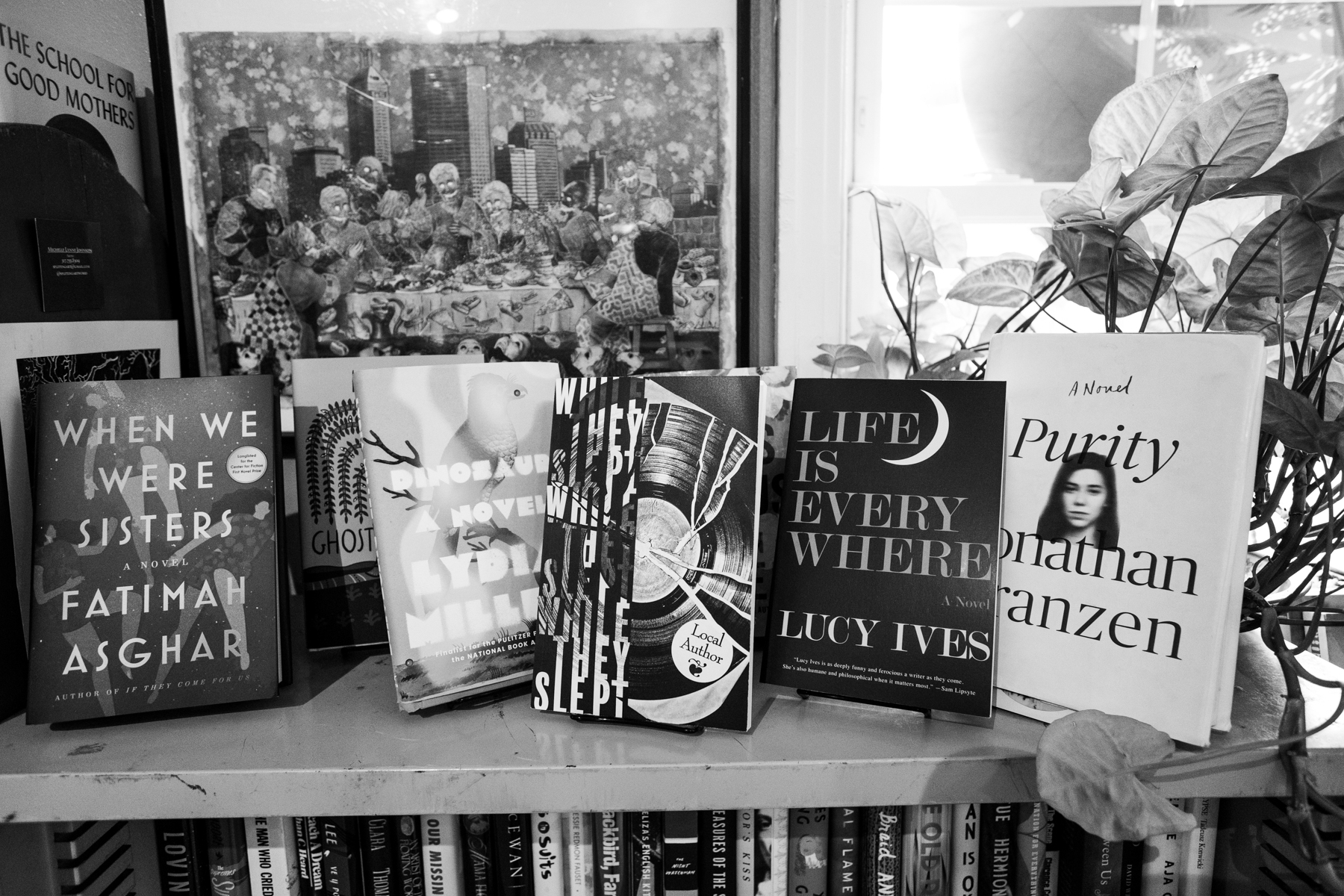
Cory Cathcart: What inspired you to make While They Slept?
Jacob Moran: I mainly wanted to transition my reputation from photographer to artist. Not that photographers aren’t artists; there’s so many branches of photography. I didn’t want to become a commercial photographer, or a fashion photographer, or anything like that. I wanted to do something that was more artistic and true to me. I was doing a lot of fashion, headshots, and model test shoots and I didn’t want to do that. I went back to why I started doing photography, which was rap, essentially. I would go to rap shows and bring my camera. That’s pretty much how I met people. I met all the artists in the book that way. I wanted to highlight the rap talent here in the city in a way that they haven’t been highlighted. The pure amount of talent is astounding, and I really want the city, and other cities, to see that. I’m such a fan of all these dudes and just want them all to succeed. They completely welcomed me without judgment, and I want this book to be a thank you for that as well. I’m a guest in rap culture and I want to make sure that I respect and honor that in the correct way. This is my way of doing so.
I was bogged down by social media and the fact that I felt like I was creating content—not creating art. I wanted to do something that was purely physical about my passion, which is rap music. I didn’t want it to be an Instagram project. I wanted it to be a physical book. I wanted to feel like I was creating art as opposed to just making pictures.
CC: Tell me more about your conflicts with Instagram and social media.
JM: I started doing so much work that I knew would get engagement and that I wasn’t really passionate about. It’s that serotonin that you see when you get a repost or something. I was creating content and not creating works of art. I was so glued to it. I was like, “Why am I doing this?”
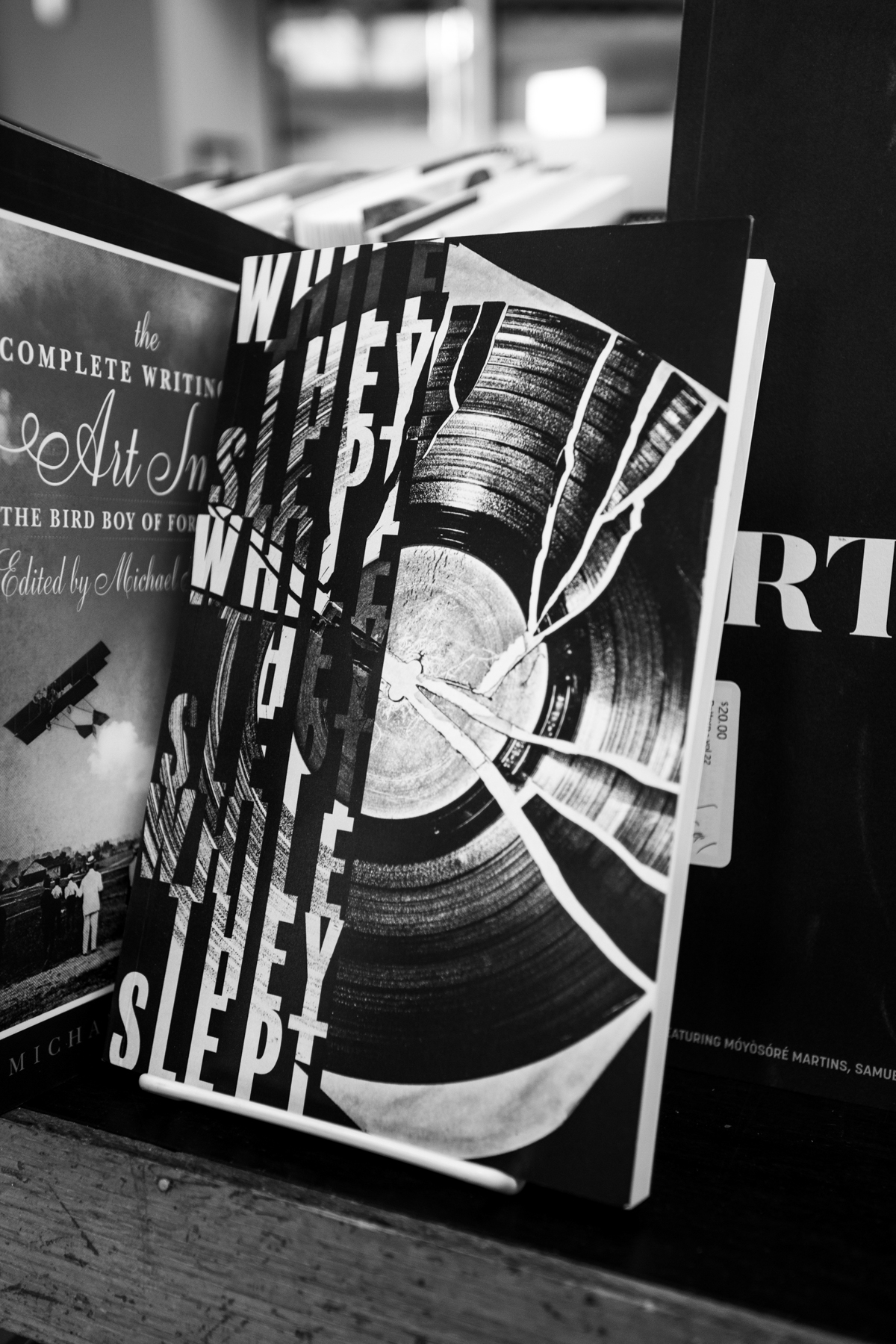
CC: This is the first book you have ever made, right?
JM: Yes.
CC: Have you ever made a zine to get a sense of how making a book works, or did you jump straight in?
JM: I jumped in. I conceptualized it last October, and then started shooting for it in November. I didn’t really have a plan for designing it or printing it. I just thought, “Why don’t I go shoot all the material and then figure it out?” I thought that the idea was really focused—indie rappers, shot on black-and-white film, all on the same camera, without any intention. I don’t think any shoot lasted longer than twenty minutes. I was mainly concerned with getting the body of work, and then figuring out how to design it, organize it, and get it printed.
CC: What did you learn about yourself as an artist while making this?
JM: I think one of the hardest things to do in photography—and not just photography, but any art form—is to find your voice. What do you want to be known for? This established that I want to be a black-and-white photographer who primarily works with the music industry. [I learned about] that being my identity as an artist now. I had always known that I love rap. I love black-and-white photography. Creating this book showed me that I can make an entire creative voice around that, which is awesome. One of the hardest things to do as a creative is knowing, “What do I want to say and how do I want to say it?” Photography is specifically hard, I think, because there’s so many avenues. There’s so many different forms and genres of it, and it’s super saturated right now. Being able to find something that you’re really passionate about, and that you think is unique to you is pretty sacred. That’s what this book taught me. You can make a living off of sticking to your passions.
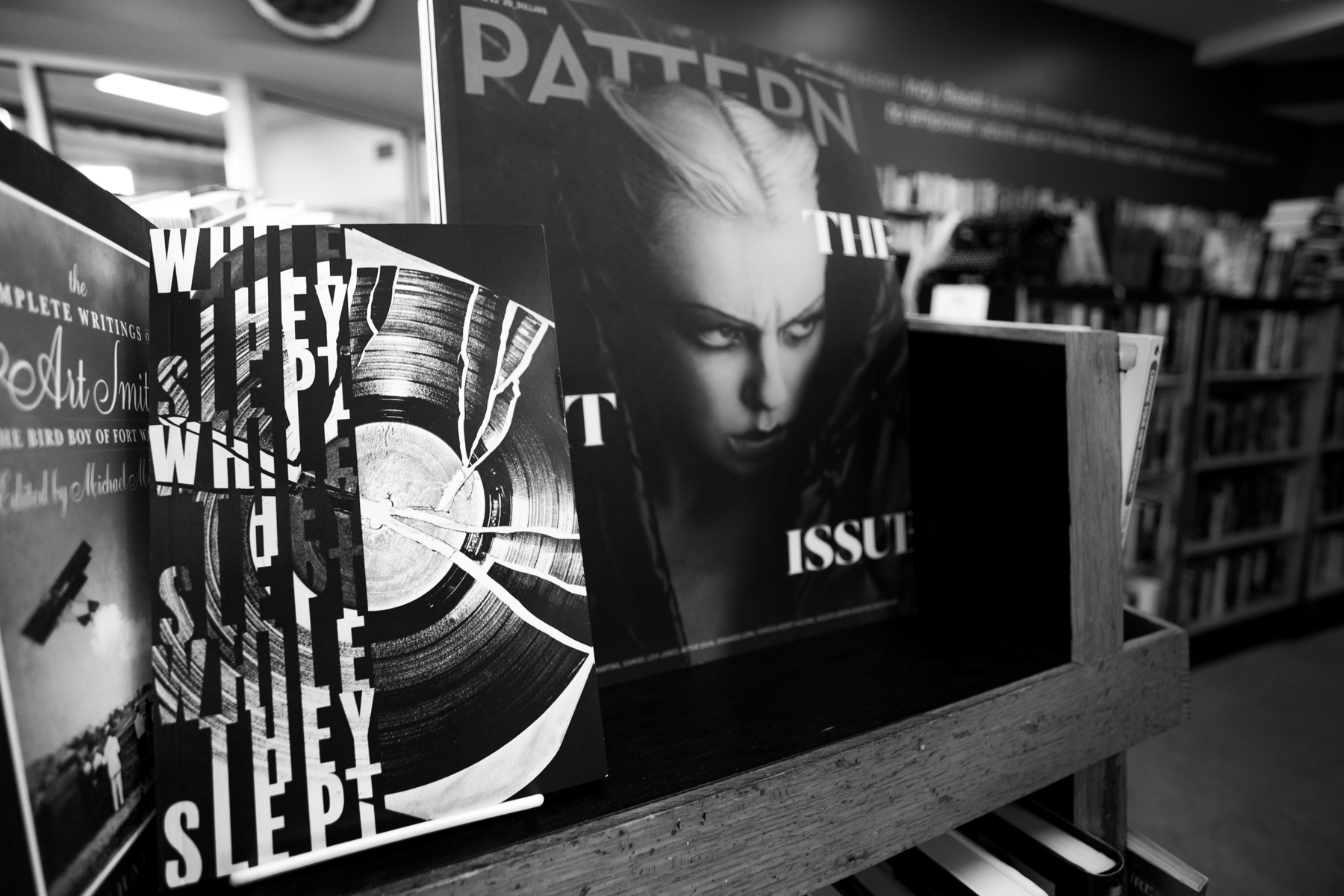
CC: What draws you to music, and specifically rap?
JM: I kind of had a pretty chaotic, traumatic childhood. By the time I was eighteen, I had moved eighteen times. I had a really inconsistent childhood, and rap was always there. If I switched schools next month I could always go back and listen to Nas. Rap stuck with me everywhere I moved. Being able to mix that passion with photography… I’m upset that I didn’t think about doing it sooner, because now it seems like a no brainer. I spent a year and a half doing stuff that I wasn’t really passionate about, but it led me here.
CC: I imagine that is a wonderful place to be in. Like, “Duh I should be doing this!”
JM: It absolutely is. It is so hard to find your artistic identity. Oftentimes it’s right there in your face. It’s funny how things work out, you know? I tried so many different genres before making the connection of: “Why don’t I go back to why I started doing photography?” I loved doing different forms, but I wasn’t super passionate about any of it. Rapping and photography—music and photography in general—have a strong connection to each other. They always have.
CC: What else do you want people to know about While They Slept?
JM: It’s all shot on one camera and the same film stock. After I designed the book and got the books I deleted all the files. The only way that you can actually view most of these photos now is in the physical form of the book. It goes back to my disconnect with social media. I was so involved with Instagram. I think I did this in spite of it, so that I could say it’s not anywhere except for here.

